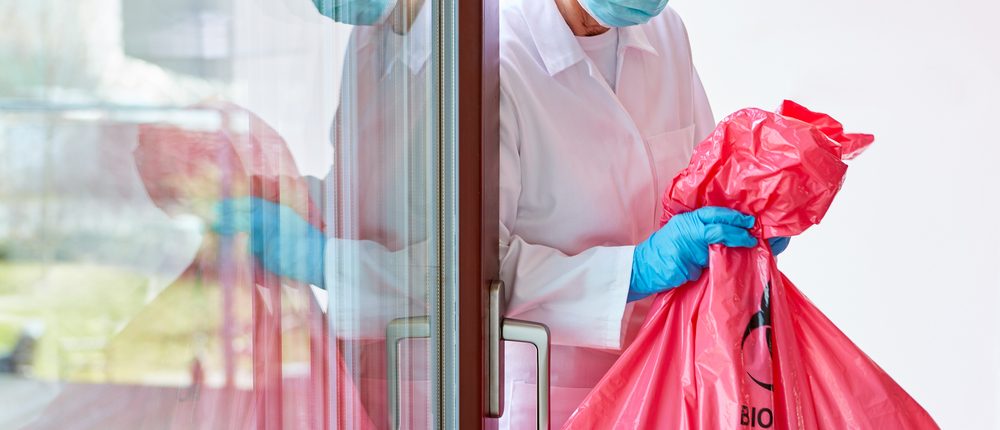Risk Prevention: Contaminated Medical Linen

Contaminated medical linen carry a lot of cross-contamination risk, and minimizing those risks is vital to a successful medical laundry operation.
How safe are your linens? Your medical linens not only play a crucial role in patient care. They also play a crucial part in keeping your facility safe against cross-contamination. In particular, handling contaminated or soiled laundry can make or break your infection control protocols.
How do you handle contaminated laundry, anyway?
Defining Contaminated Laundry
Contaminated laundry, by OSHA definition, is linens and garments that are soiled with blood and other materials and bodily fluids that may contain infectious pathogens. Items that may contain sharps like surgical implements and syringes also fit into the standard definition of contaminated linens.
Two major challenges present themselves when handling contaminated linen. The primary of these challenges is the issue of safe handling with the aim of infection and cross-contamination prevention. Contaminated linens require a better trained and more vigilant hand than their non-contaminated counterparts. The most taxing part is making sure to isolate these linens as much as possible, without putting them in contact with any other person or surface.
Another related issue is improper labeling. Many healthcare facilities mistakenly pack contaminated linens in bags meant for disposal, thinking that contaminated linens have no hope for reuse. This leads to unnecessary linen loss that contributes to a near-billion-dollar healthcare industry problem. This mishandling of linens also contributes to the global problem of excessive waste.
Contaminated Linens: Handling, Labeling, and Transportation
Based on OSHA guidelines, here are ways on the proper handling of contaminated linens:
- Handling. Healthcare professionals need to practice extreme care and caution when handling contaminated linens. A very important, and often overlooked, aspect of handling contaminated linens is the minimization of agitation prior to washing. This is done in order to control transmissions of pathogens in the air or coming into contact with other surfaces which raises risks for cross-contamination. Employees handling contaminated linens must bag said items on-site, ensuring protection against leaks (if the items are wet).
- Labeling. As per OSHA clarification, items need biohazard labels only if the laundry facility processing them does not practice universal precautions on the handling of potentially hazardous materials. Otherwise, contaminated linens do not need to go into red bags (which are designed for regulated waste and headed for appropriate disposal). For more information on proper labeling requirements, refer to the OSHA guide found here.
- Transportation. Bagged, contaminated linens headed for transportation should (a) not be held close to the body, and (b) protected against squeezing. This is especially important for items that contain sharp objects that can puncture the bags and cause leakage of contaminants or injure medical linen service employees.
Preventing Contamination Risk with the Right Medical Laundry Service Provider
The final, crucial step in lowering infection risk concerning contaminated linens is the laundry process. It is the step that ensures the safe reentry of linens into your inventory. Aside from complying with universal precautions, it is also important to find a medical laundry service that is Hygienically Clean Healthcare certified. They help boost your infection control efforts and the protection and peace of mind of your patients and employees.
Contact Medico Today for Safer Medical Laundry
For your crucial medical laundry needs, trust only Medico! Medico Healthcare Linen Service has certifications and compliance certificates on hand. We also have the right procedures that ensure your safety and protection from start to finish.
Contact us today at (800) 464-6334 to get started or to learn more about our medical linen services.




